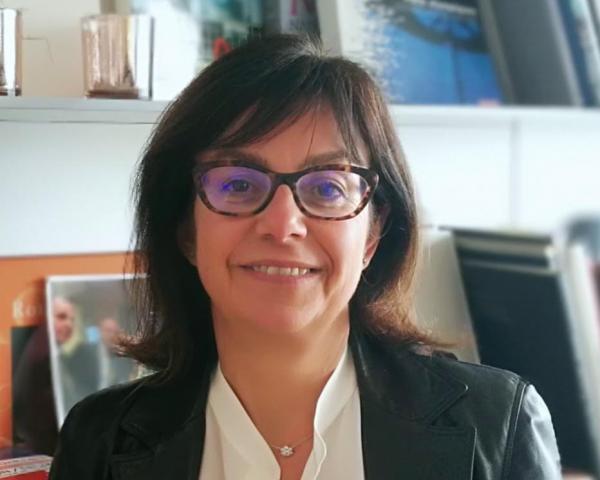As the insurance industry begins to emerge from the shadow of COVID-19, International Women’s Day (IWD) is a good time to reflect on the state of gender equality in our leadership ranks and assess the outlook. While much progress has been made, there is still a great deal of work to do.
My experience with equality
Certainly, gender equality has been a big priority for me, personally. In fact, I make it a key pillar of my leadership and champion it directly and purposefully on the ground in the businesses I run, as I believe all leaders should. When I assumed the role of EY EMEIA Financial Services Assurance managing partner in 2013, only 12% of the partners were female. Six years later, when I began my current role as EY global insurance leader, that figure had nearly doubled to 22%.
I have been motivated to address gender equality not only out of a sense of fairness but also because I believe that diversity is directly tied to business performance. I have seen firsthand throughout my career what ample research has shown: Organizations with more diverse leadership teams outperform their peers. Many research studies have shown that diversity and inclusion yield a wider range of skills and perspectives, improve decision-making, boost productivity and foster empowerment. Diversity and inclusion also enhance corporate brands and reputations, especially among younger generations who want to do business with and work for companies that share their values.
Gender equality: easy to define, difficult to achieve
When talking about sensitive issues, it can be useful to define our terms clearly. To me, gender equality means that everyone, regardless of gender identity, has the same opportunities for professional success and the same compensation and rewards for their performance. It’s a simple and clear definition, but there are multiple reasons why true gender equality has yet to become the norm.
Cultural factors have certainly played a role, even at companies that make a formal commitment to equality. In some cases, perception biases can hold people back. Maybe the perception is that talented female executives don’t go “all in” on their roles. Maybe women are reluctant to assert themselves or put forth too many fresh ideas for fear of how they will be perceived. Maybe the emphasis on team building and collaboration prevents women leaders from receiving the credit they deserve for producing results. Perhaps women don’t complain when they feel mistreated or overlooked. In all of these cases, the result is that promotions go to those who make their feelings known and demand recognition.
For example, few female university students major in actuarial science, a discipline that historically produces many senior executives in insurance. The future pipeline of senior leaders is only as strong as the next generation of workers who are recruited into the field and into the right functions.
See also: 3 Keys for Building Women Leaders
Let’s look more closely at the state of women in the insurance industry. According to research from ACORD, women drive the insurance industry, composing more than 60% of the workforce. Leadership is where we find inequality. Women hold only:
- 19% of board seats
- 11% of named officer positions
- 12% of C-level positions
These numbers reflect the reality that gender equality remains a distant goal. But there are reasons for optimism. Though women are still underrepresented at the level of the executive committee and board, the last decade has seen significant progress at the level just below. I see a strong generation of women leaders who are well-positioned to achieve great things at the top of the organization in the years to come, even if the numbers won’t be equalized any time soon. Internal mentoring programs, like EY teams, are also critical to balancing out boards and C-suites. Indeed, more companies – including EY – are elevating diversity and placing it at the core of their values and mission statements.
Personal commitments are critical. I make it a point to engage other women at EY to talk about their career paths, the challenges they face and their ambitions for the future. I have often promoted women into leadership roles even when they were considered “not ready.” This is a common misconception. While females are regularly included in succession plans, they are often passed over because they are “not ready,” while male candidates are almost always perceived to be ready. Of all the supposedly “not ready” candidates I’ve promoted, not one has fallen short in her new role.
Networking groups are a useful resource for overcoming such subtle barriers. The Insurance Supper Club and the Association of Professional Insurance Women (APIW) are two support communities for women in the insurance industry I have engaged with. I support these groups because they promote strong networks among female leaders, a critical component for success at the highest levels. They also create opportunities to share experiences, to find role models and be inspired by other industry leaders and to seek help or different views on tackling specific business issues.
Moving forward with gender equality
My experience has taught me valuable lessons that I would recommend to other female leaders. To advance gender equality, successful female leaders should:
- Identify strong performers early in their careers. I always encourage high-potential candidates to think big and strategically about their careers and not be shy about their ambitions. We must look beyond self-doubt about our ability to lead, which is common in many women. The key is to project ourselves into the leadership roles we want and gain the courage to raise our hand and ask for them.
- Make themselves visible. This is a critical step because it strengthens networks, demonstrates what can be accomplished and helps boost confidence, which is often necessary for women to make the most of their leadership potential. Women must also overcome reluctance to assert themselves and find sponsors who can help them increase their visibility.
- Serve as champions of inclusiveness and diversity. We must engage our male colleagues to ensure they understand existing biases and how they can help eliminate them by advocating for gender equality. Male and female leaders alike must live that advocacy in the teams they build and the decisions they make. Women can’t do it alone.
- Encourage their daughters, nieces and other young women. We must teach the rising generations to be fearless in choosing their fields of study, including largely male domains such as math, science and engineering. If they want a career in financial services, we shouldn’t be shy in pointing them toward cybersecurity, artificial intelligence, analytics and data science, while also coaching them about what to expect in these traditionally male-dominated domains.
See also: Insurers Can Lead on Addressing Inequality
Ultimately, I see gender equality as a matter of performance and leadership. The insurance industry needs more than ever to attract and more than ever to retain the best talent, regardless of gender, ethnicity, race or sexual orientation. The success of our firms demands it. Thus, it’s a primary responsibility of all executives in financial services. It is both the right thing to do and an imperative for business.
As we celebrate IWD, I'm reminded of and grateful for all the female staff, leaders and partners I work with at EY. On the insurance team specifically, our strong performance would not be possible without them. I am particularly proud to mention the EY insurance female leadership team below.
- In the Americas: Tara M Alex; Brenda Betts; Nancy Conturso; Janice Deganis; Dorree Ebner; Laura Ford; Katy Gardiner; Christine Holmes; Nicole Michaels; Sophia Yen; Carly Warren
- In EMEIA: Sabine Betz; Jenny Coletta; Maribel de la Vega; Cornea De Villiers; Zeynep Deldag; Penney Frohling; Hedvall Sunel Jacobs; Vicky Lampitt; Lauren Mounier; Anne Nahkala; Martina Neary; Gabriella Selvander; Anastasia M Vinogradova
- In APAC: Sun Young (Anita) Bong; Janine Donnelly; Liza Drew; Hong Gu; Hiroko Kakiuchi; Vanessa Lou







